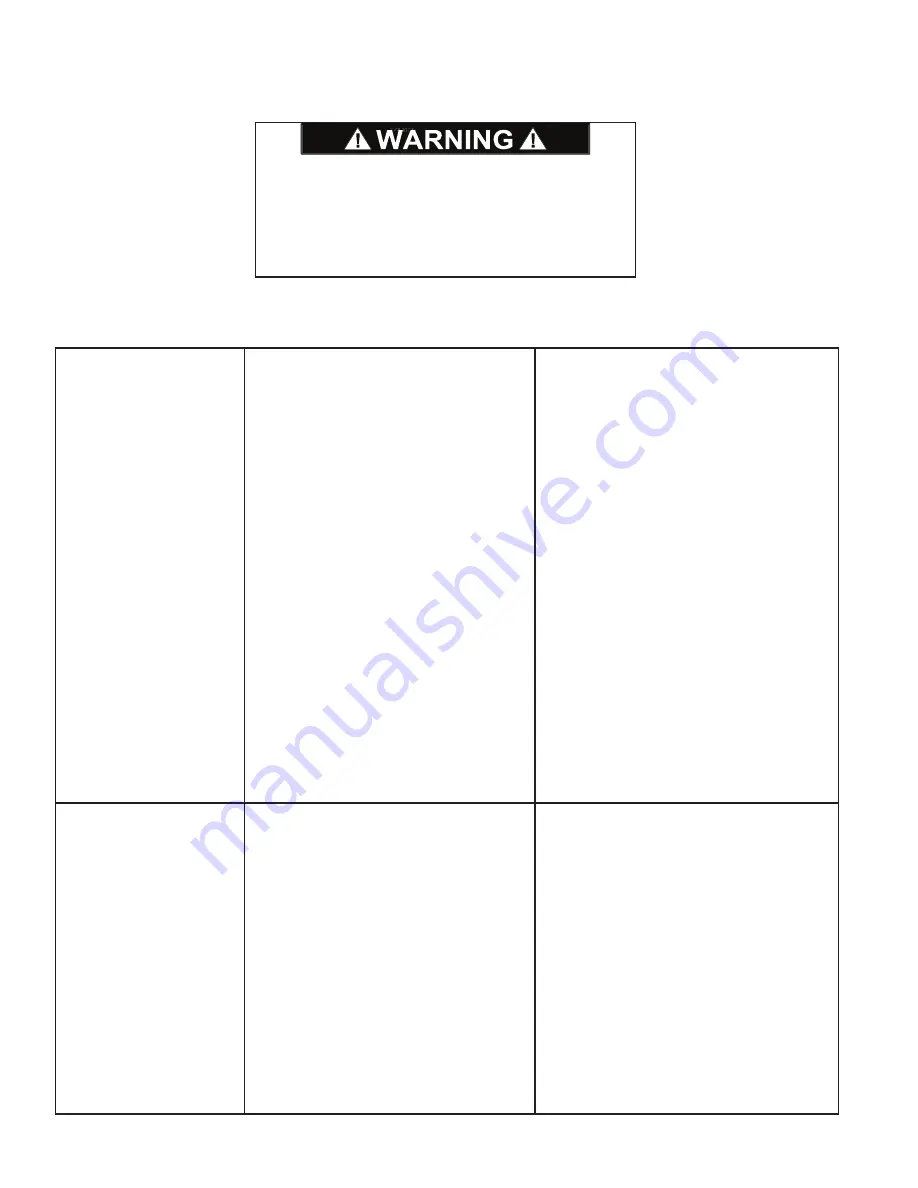
14
TROUBLESHOOTING
A
The winch will not lower
the load or not lower the
load smoothly.
1. The friction brake may not be releasing
as a result of a defective brake cylinder
seal.
NOTE:
If the brake cylinder seal is defec-
tive you will usually find oil leaking from
the winch vent plug.
2. Friction brake will not release as a re-
sult of damaged brake discs.
Check brake cylinder seal as follows:
A. Disconnect the swivel tee from the brake
release port. Connect a hand pump with ac-
curate 0-2000 PSI (0-13,000 kPa) gauge
and shut-off valve to the –4 JIC fitting in the
brake release port.
B. Apply 1,000 PSI (6,900 kPa) to the brake.
Close shut-off valve and let stand for five
minutes.
C. If there is any loss of pressure in five
minutes, the brake cylinder should be dis-
assembled for inspection of the sealing sur-
faces and replacement of the seals. Refer
to “Motor Support-Brake Cylinder Service.”
Disassemble brake to inspect brake discs.
B
Oil leaks from vent plug.
1. Same as A1.
2. Motor seal may be defective as a result
of high system back pressure or con-
taminated oil.
Same as A1.
System back pressure must not exceed 150
PSI (1,030 kPa) for gear motor. 30 PSI for
piston motor. Inspect hydraulic system for a
restriction in the return line from the control
valve to the reservoir. Be sure control valve
and plumbing is properly sized to winch mo-
tor.
Oil analysis may indicate contamination has
worn motor shaft and seal. Thoroughly flush
entire hydraulic system and install new fil
-
ters and oil. Install new motor seal.
TROUBLE
PROBABLE CAUSE
REMEDY
If a winch exhibits any sign of erratic operation or load-
control difficulties (such as load creeping or chattering),
appropriate troubleshooting tests and repairs should
be performed immediately. Continued operation in this
manner may result in property damage, serious person-
al injury, or death.
Summary of Contents for CH330
Page 2: ...2...





























